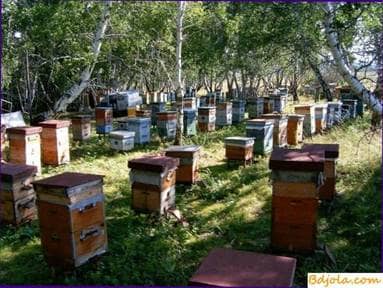
Rezedovy honey honey bees are collected from the flowers of odoriferous. This honey belongs to the category of high-grade, has an exceptionally pleasant aroma, and to taste it can compete with lime. Bees receive from the flowers of sliced scented lots of nectar and reddish-orange flower pollen. From a hectare of flowering resids, bees collect more than 200 kg of excellent honey.
Клещ боится воды. Изделия с медом рецепты.
Bee Honey